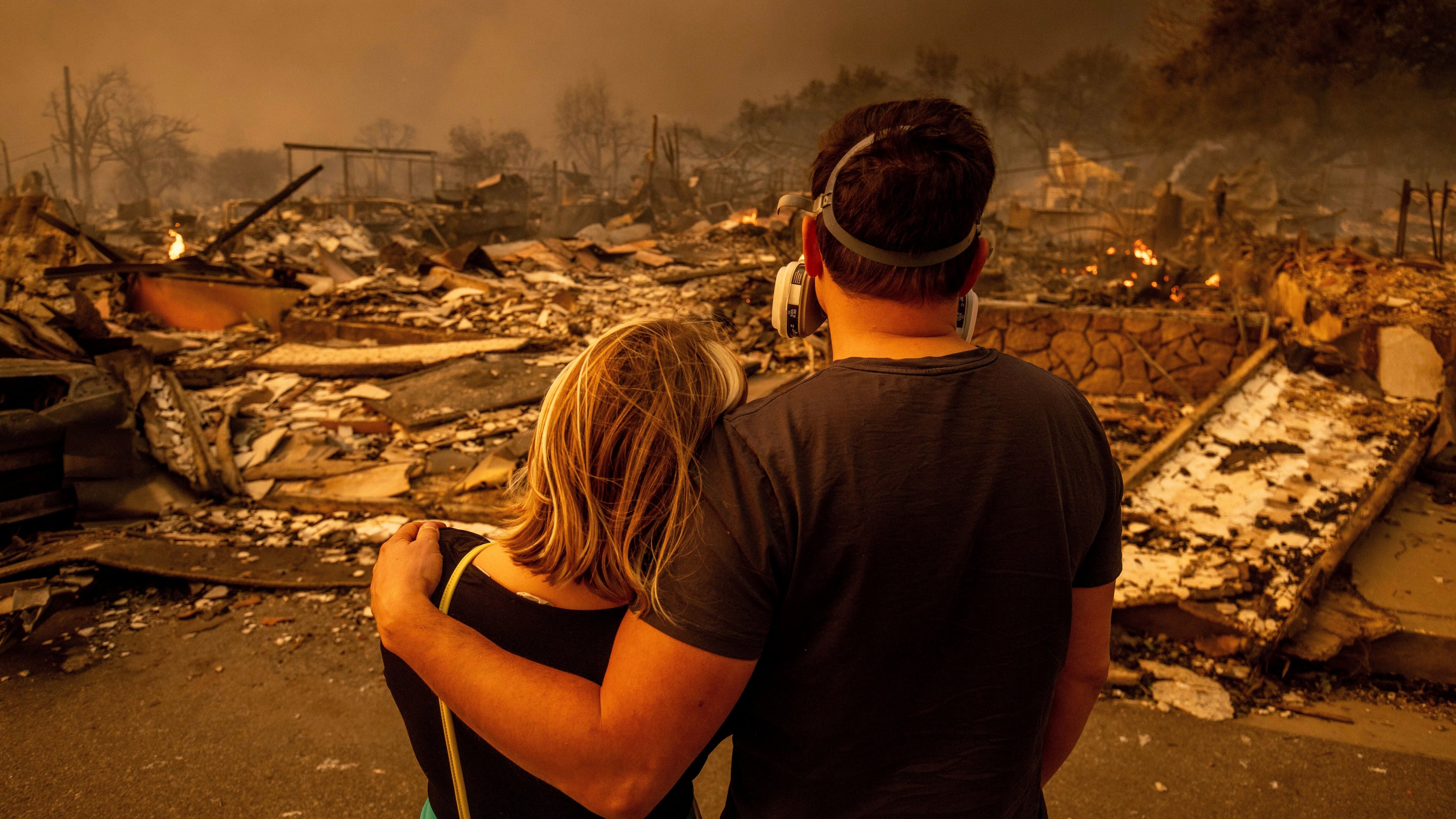LA County response to deadly fires slowed by lack of resources, outdated alert process, report says

LOS ANGELES (AP) — An outside review of Los Angeles County’s response to January’s deadly wildfires found a lack of resources and outdated policies for sending emergency alerts led to delays in warning residents about the need to evacuate as flames began consuming neighborhoods in Altadena and Pacific Palisades.
The Independent After-Action Report produced by the consulting firm McChrystal Group was commissioned by county supervisors just weeks after the Eaton and Palisades fires killed more than 30 people and destroyed thousands of homes in highly dense areas of LA County.
The report released Thursday says a series of weaknesses, including “outdated policies, inconsistent practices and communications vulnerabilities,” hampered the effectiveness of the county’s response.
The Associated Press found some residents didn’t receive emergency alerts until well after homes went up in flames.
The report cited critical staffing shortages including a high number of sheriff’s deputy vacancies and an under-resourced Office of Emergency Management. In addition, first responders and incident commanders were unable to consistently share real-time information due to unreliable cellular connectivity, inconsistent field reporting methods, and the use of various unconnected platforms.
“While frontline responders acted decisively and, in many cases, heroically, in the face of extraordinary conditions, the events underscored the need for clearer policies, stronger training, integrated tools, and improved public communication,” the report says.
It is not intended to investigate or assess blame, county officials said in a news release.
The Office of Emergency Management began putting together its staffing plan for predicted heavy winds Jan. 3, four days before the Palisades and Eaton fires ignited. But an experienced OEM staffer had been sent out of town for a training event. That meant several less-knowledgeable staffers were in key positions, according to the report.
They were also working with some new emergency notification software provided by an existing vendor: The county signed the expanded contract with emergency alert company Genasys in November, just before the holidays. Only four staff members were trained on Genasys when the fires hit, according to the report.
The review also found that the process to communicate an evacuation decision to the public was slow, convoluted and involved several leadership roles and the need for stable communication channels between county-level departments.
In the case of the Palisades Fire, the Los Angeles County Fire Department and Sheriff’s Department identified areas that required evacuation. They then communicated those areas to a member of the County’s Office of Emergency Management at the Incident Command center. This person then made a phone call or sent a text message to another OEM staffer located in the Emergency Operations Center, who then updated the system put in place by the third-party vendor and triggered an alert to the public.
During the January fires, according to the report, this process took between 20 and 30 minutes. The report’s authors note this represented an improvement, though, over the old system that took between 30 and 60 minutes for the public to receive notice of an evacuation.
Still, the report notes, many of the county’s methods to alert the public require opting-in.
“If residents are not aware of or do not sign up for these services, such as Alert Los Angeles County, Genasys PROTECT, and WatchDuty, they will not benefit from the alerts and notifications sent from these systems,” the report states.
The Los Angeles County Board of Supervisors is scheduled to review the 133-page report when it meets next Tuesday.
The causes of the two fires are still under investigation.
After-action reports and investigations revealed issues with alert systems in other California blazes: in the 2017 Tubbs Fire, which killed 22 people in Santa Rosa; the 2018 Camp Fire, which killed 85 people in Paradise; the Woolsey fire, which started the same day and killed three in Malibu; as well as in Colorado’s 2021 Marshall Fire, which destroyed more than 1,000 homes outside Denver; and in Hawaii’s 2023 Lahaina Fire, which decimated that historic town and killed 102.
___
Boone reported from Boise, Idaho. Associated Press writer Christopher L. Keller in Albuquerque, New Mexico, contributed to this report.
More Stories
The Latest

